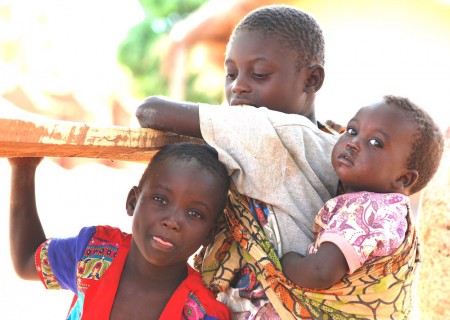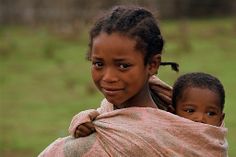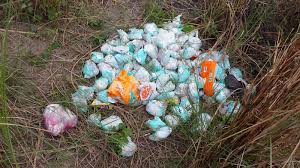Changing Worldwide
How common are disposable diapers in the world compared to the cloth ones ... or to none?
It is always interesting to think outside the box and look into how people go about baby changing in different parts of the world. Babies are born everywhere and their diapers need of course be changed somehow. But how do they do it in the corners of the planet where they cannot afford any diapers at all? And what place in the society do children actually hold in various cultures, and how do parents approach baby care in general?
Thanks to people travelling across continents and moving around the world for work or better life conditions, we were able to make friends with families from countries it would be hard for us to visit, and thus we could write this article. This knowledge does not therefore come from Wikipedia or internet research, but from friendly talks with the people from the regions mentioned. Well, just come with us and emerge into the deepest rainforest, into the heat of Africa, or the greedy Europe.
Let’s begin our journey through the diaper world here in Europe.
Disposable diapers are well-spread and used across Europe. Cloth diapers are regarded by most people as “a thing for crazy Eco-freaks” and there are many myths confusing people’s minds and social networks. Only a minority of families (ca 3-10%, depending on the country) opt for cloth diapers. However, the tendencies change and cloth diapers become more and more popular these days. May it be due to the ecological footprint that parents feel they are leaving for the next generations, or the huge amount of waste in the form of used disposable diapers they have to get rid of every day, or the realisation what impact the “plastic” diaper might have on the health of their baby, parents simply start to consider the choice of diapers more seriously.

For instance, in Switzerland, you have to buy special waste-disposal bags just for diapers and therefore pay extra for the waste of this sort. In Germany, this varies across districts or federal states. In some cities, people also must buy these special waste-disposal bags, or they must pay for a larger waste container to be able to dispose of the huge amount of waste they produce. As not only the endless purchasing of packs of diapers but also these extra costs for their disposal affect the family budget significantly, people often opt for the cloth diapers in the end.
Children in Europe play a big role in the society, parents just want to do the best for their baby. After birth, they start to be concerned with topics around healthy baby-care and child upbringing. They attend courses of baby-swimming, of yoga with babies etc. Health is a great topic and it is only natural that parents then decide to use cloth diapers for their baby.
Let’s jump over into the deep of the heat of Africa, into Zambia.
In Zambia, the vast population is poor. So poor, that parents cannot afford buying even cloth diapers. The financial situation makes it very straightforward - the children of these families go diaper-less straight after birth. Which is, however, not exactly the same diaper-less practice as we know from the Western world. Here, babies simply have no diaper and thus it often happens that they pee on someone. Because of that, they have to become dry very quickly, otherwise they get punished for peeing on someone. Children are actually considered a great blessing and a treasure for the family, but in everyday life they have to help with daily work once they are able to. Before that, they are being looked after by their older siblings or by grandparents. Kids have to become independent and “grown-up” very quickly.

In the culture of native inhabitants of South America, we can find some similarities.
The Mbya-Indians use no diapers as there is no money for it. They do have small rubber pants into which they put rugs of old clothes, or sometimes their actual clothes. Sometimes they can’t afford even that, and then their only blanket becomes soiled by their baby. If it is cold, this becomes a big problem. During the day, the babies are naked on their bottom. Mothers learn to notice quickly when their baby is about to pee and move the baby away from the blanket. This way the kids learn to become dry very early. Once they are able to sit, they simply squat down anywhere on the ground and do their business.
Indian mothers breastfeed their child until the next child is born. Usually, this is the case after 1,7 year. Mothers do not have much knowledge about children health, as in Indian culture, it is not common to explain and try to understand this, but simply follow the traditional ways. Children often get cold due to missing clothes, they get pneumonia and die. It is believed though that it is the river spirits who bring illnesses and kill the children. That they steal their souls.
Babies are washed only when they are dirty, except the dirt between their fingers, this cannot be removed as it is believed they would become thieves. People talk to children very little, as they believe their soul is grown up. Due to their fears, they feel they must not talk to kids in a childish way. Babies are carried in a cloth which is tied over the shoulders and across the chest. If the family finds a cloth flour-sack, a hammock is made from it and the little one is put there to sleep.

With native inhabitants in Chaco (Brasil), the picture is very similar.
Babies and toddlers are generally treated well, their mothers carry them on their chest in a scarf practically all the time. When they are hungry, they are right at the source :) The Indians try to avoid their babies crying, as they believe the soul leaves the child when they cry. Infants wear a piece of cloth instead of a diaper. This is always dried in the sun and reused. Only when the mother needs to go to the water source, they take the cloths and wash them there. As soon as the children can walk, they make their need whenever they are. When the mother sees her child poo, she scratches it off their legs with a stick and cleans the legs. A potty is of course not known.
For Paraguayan and Brasilian inhabitants from the cities, things are completely different. Publicity and TV spots have brought the “modern” disposable diapers into their minds. Being able to use disposables is regarded as a sign of prosperity. However, in Paraguay itself the handling of used disposable diapers is a huge issue. There isn’t any waste-disposal system as we know it from Western countries. Normally, people burn their waste in their gardens - they dig a large hole, place the waste there and set it on fire. However, the disposable diapers do not burn well and remain there, and street dogs always drag them around everywhere.
On top of that, there are diaper dumping sites all around these countries, and these look like real diaper-mountains. Luckily, even in these countries, thanks to media and internet, more and more mothers (we are not saying parents, as fathers are not really involved in child care, 60% of mothers are single parents), choose cloth diapers. So even in these countries, environmental issues are starting to be considered.

What to say to summarise? In poor regions, disposable diapers are, due to the lack of money, totally out of question. In other countries, they have become a sign of well-being only thanks to good publicity and intelligent advertising. We in Bamboolik have a long-term goal to bring the (modern) cloth diapers back into the general awareness of all parents. So that when parents say “we use normal diapers”, they mean cloth diapers and not the disposable ones. As in most parts of the world, disposable diapers are anything but “normal”.
The article has come to life thanks to travelling experience of our cloth diaper consultant from Germany, Rebekka Gansel.
